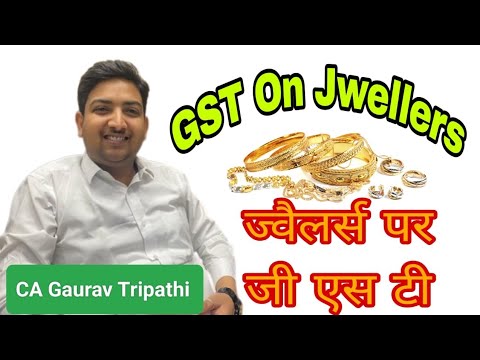Key Takeaways
- Unified Tax Rates: GST applies a 3% rate on gold purchases and a 5% rate on making charges, standardizing taxes across the country but increasing the overall cost for consumers.
- Simplified Tax Structure: Replacing multiple taxes with a single system, GST simplifies compliance for businesses and promotes transparency in the gold market.
- Boost for Organized Sector: The GST regime favors registered and compliant jewelers, leading to a shift towards more organized retail in the gold jewelry market.
- Input Tax Credit Benefits: Businesses can offset GST paid on inputs against their taxable output, potentially reducing operational costs and prices for consumers.
- Buyer Considerations: Consumers must be aware of GST rates, purity, pricing, and the reputation of jewelers when purchasing gold jewelry to ensure value and compliance.
Gold, a symbol of wealth and security, is not just a precious metal but an integral part of the global economy and personal investments. In India, the introduction of the Goods and Services Tax (GST) on gold has been a topic of extensive discussion, affecting everyone from large-scale jeweller to individual buyers.
This article explains into the intricacies’ of GST on gold Jewellery, including purchase rates, making charges, exemptions, and its overall impact on the market.

What is the GST Rates on Gold?
GST on Gold Purchase The current GST rate on gold purchases is set at 3%. This rate is applicable to both raw and finished products. However, it’s crucial for buyers to understand that this rate does not include making charges and other additional costs.
GST on Gold Making charges for ornaments are taxed at a standard GST rate of 5%. This is significant for buyers, as making charges can vary widely and significantly impact the overall cost of the ornament.
GST Calculation on Gold
Calculating GST on gold involves considering both the 3% GST on the gold itself and the 5% on making charges. This dual calculation can often lead to confusion among buyers, making it essential to ask for a detailed invoice when purchasing jewellery.
Step 1: Calculate GST on the Gold Value
First, determine the value of the gold you’re purchasing. For this example, let’s say you’re buying jewellery worth Rs. 100,000.
- GST on jewellery = 3% of Rs. 100,000
- GST on jewellery = 0.03 * 100,000
- GST on gold value = Rs. 3,000
Step 2: Calculate GST on Making Charges
Next, calculate the making charges and the GST on these charges. Assuming the making charges are Rs. 20,000:
- GST on making charges = 5% of Rs. 20,000
- GST on making charges = 0.05 * 20,000
- GST on making charges = Rs. 1,000
Step 3: Total GST Payable
To find the total GST payable, add the GST on the jewellery value to the GST on making charges.
- Total GST = GST on jewellery value + GST on making charges
- Total GST = Rs. 3,000 + Rs. 1,000
- Total GST = Rs. 4,000
Step 4: Total Cost of the Gold Jewellery
Finally, to find the total cost of the jewellery add the original gold value, the making charges, and the total GST.
- Total cost = Jewellery, value + Making charges + Total GST
- Total cost = Rs. 100,000 + Rs. 20,000 + Rs. 4,000
- Total cost = Rs. 124,000
- Example Summary:
- Jewellery, value: Rs. 100,000
- Making charges: Rs. 20,000
- GST on Jewellery, value (3%): Rs. 3,000
- GST on making charges (5%): Rs. 1,000
- Total GST: Rs. 4,000
- Total cost of jewellery,: Rs. 124,000
Impact of GST on Gold
The implementation of GST on gold has streamlined the tax structure, replacing multiple taxes with a single tax rate. While this has simplified transactions, it has also led to a slight increase in the overall cost of products, impacting consumer buying patterns.
- Price Transparency and Standardization
Before GST, the taxation on jewellery, was fragmented, with various states imposing their own taxes and VAT, leading to price discrepancies across regions. GST has brought uniformity in taxation, with a standard rate of 3% on gold across India, making prices more transparent and comparable for consumers across different states.
- Increased Cost for Consumers
The introduction of GST has led to an increase in the overall cost of jewellery, for consumers. Prior to GST, the tax on gold was slightly lower, with the addition of 1% VAT and 1% sales tax in most states. Under GST, the total tax on gold has increased to 3%, along with a 5% GST on making charges, making jewellery slightly more expensive for the end consumer.
- Streamlined Business Operations
For businesses in the jewellery, sector, GST has streamlined operations by replacing multiple taxes with a single tax regime. This simplification has made compliance easier and reduced the administrative burden on jeweler’s and gold merchants. Additionally, it has facilitated smoother interstate movement of jewellery, thanks to the e-Way bill system under GST.
Impact on Small Jewellers
While GST has brought in standardization, it has also increased the compliance burden for smaller jewellers. The requirement to maintain detailed invoices and file regular GST returns has been challenging for small-scale and unorganized sector players, potentially affecting their competitiveness and operational efficiency.
- Increased Organized Sector’s Market Share
The transparency and compliance requirements under GST have given an advantage to organized players in the jewellery market. Consumers are increasingly preferring to purchase from organized retailers who provide GST-compliant invoices and clearer pricing, thus increasing the market share of these organized players at the expense of the unorganized sector.
- Input Tax Credit Benefits
GST allows for the input tax credit, enabling jewellers to deduct the GST paid on inputs (like raw gold) from the GST collected on the sale of ornaments. This mechanism has the potential to reduce the cost of operations for businesses and could lead to marginal price benefits for consumers, although this depends on the extent to which businesses pass on these benefits.
- Export Competitiveness
GST has also impacted the competitiveness of Indian gold exports in the international market. The ability to claim a refund on the input tax for goods exported out of India can lower the cost for exporters of jewellery, potentially making Indian jewellery more competitive on a global scale.
GST on Gold Exemptions

Certain categories of entire gold transaction value are exempt from GST, including jewellery, imports under specific schemes and transactions between registered jewellers.
Gold Imports under Specific Schemes
Gold imports under schemes like the Duty-Free Import Authorization (DFIA) and the Export Promotion Capital Goods (EPCG) scheme may be exempt from GST, provided they meet certain conditions and are used for specific purposes, such as export production.
These exemptions are designed to encourage exports and support the jewellery, industry’s competitiveness on a global scale.
- Exports of Gold Jewellery, and Ornaments
Exports of gold jewellery, and ornaments are considered zero-rated supplies under GST. This means that while the export transaction itself is subject to GST, the exporter can claim a refund for the tax paid on inputs, effectively making the export GST-free. This is aimed at promoting exports without the burden of tax costs.
- Gold Supplied to SEZs and Export-Oriented Units (EOUs)
Supply of gold to Special Economic Zones (SEZs) or Export-Oriented Units (EOUs) is treated as a zero-rated supply, similar to direct exports. Supplier of gold ornaments can either supply gold without paying GST under bond or letter of undertaking and claim refunds on previously paid input taxes or choose to pay GST at the time of supply and then claim it back as a refund.
- Transactions Between Registered Jewellers
Certain transactions between registered jewellers, particularly those involving the exchange of gold for gold (without money consideration), may be exempt from GST. This is to facilitate the ease of doing business within the industry, allowing jewellers to exchange gold ornaments as raw material without additional tax burdens.
- Gold Loans
The interest on loans given against jewellery, as collateral is exempt from GST. This exemption applies to the interest charged by banks and non-banking financial companies (NBFCs) for gold loans, making it more attractive for individuals to secure loans against their jewellery holdings.
e-Way Bill Rules for Gold
The e-Way Bill system under GST in India mandates the generation of an electronic waybill for the movement of goods exceeding a certain value threshold. For jewellery,, an e-Way Bill needs to be generated when the value of the jewellery being transported exceeds Rs. 50,000.

This rule is crucial for businesses and individuals involved in the sale, purchase, or movement of jewellery, across state lines or within a state.
To comply with the e-Way Bill requirements
- Registration: The transporter or the business must be registered on the GST e-Way Bill portal.
- Generation of e-Way Bill: Before transporting gold worth more than Rs. 50,000, an e-Way Bill must be generated on the portal by providing details such as the nature of the goods, the consignor and consignee’s details, the transporter’s details, and the value of the goods.
- Validity: The validity of an e-Way Bill depends on the distance the gold needs to be transported. For every 100 km or part thereof, the validity is one day.
- Consequences of Non-Compliance: Failure to generate an e-Way Bill for eligible jewellery transactions can lead to penalties, including fines and seizure of goods.
Availability of Input Tax Credits
One of the benefits of GST for businesses in the jewellery sector is the availability of input tax credits. This allows businesses to reduce their GST liability by the amount of GST paid on purchases, including jewellery, thus lowering the cost of doing business.
- Input Tax Credit (ITC): The mechanism that allows registered businesses to claim credit for the GST paid on their purchases, which can be offset against the GST payable on the sale of goods or services.
- GST Paid on Purchases: This term refers to the GST amount that a business pays when purchasing goods or services that it uses as inputs in its operations.
- GST Owed on Sales: The GST amount that a business is liable to pay on its sales or services provided. In the context of jewellery, it would be the GST collected from customers when selling gold or gold-related products.
- Eligibility for ITC: To be eligible for ITC, businesses must be registered under GST, and the goods or services purchased must be used for business purposes. The eligibility criteria are crucial for gold traders and jewellers, ensuring that the GST paid on gold purchases can be claimed as ITC.
- Documentation for ITC: Proper invoices or bills that clearly mention the GST paid are essential for claiming ITC. These documents serve as proof of tax payment and must comply with GST regulations.
- Utilization of ITC: The ITC claimed can be used to offset GST liabilities on the sale of goods or services. For businesses dealing in jewellery, this means that the GST paid on the purchase of jewellery or making charges can be offset against the GST collected from customers.
- Impact on Pricing: The ability to claim ITC can reduce the cost of inputs for businesses, potentially leading to more competitive pricing for jewellery products and services.
- Compliance and Reporting: Regular filing of GST returns is mandatory for claiming ITC. Businesses must report their GST payments and credits accurately to avoid discrepancies and penalties.
Exclusivity From the GST
Certain exclusive jewellery products and transactions are treated differently under GST. Understanding these exclusivities can benefit both consumers and businesses by optimizing tax liabilities.

- Special Schemes: Certain government schemes may allow for the import or purchase of gold without the standard GST, aiming to promote specific economic activities or sectors.
- Export-Related Transactions: jewellery exports can be subject to different tax treatments, often with the aim of boosting foreign trade and economic growth. These transactions might be zero-rated or eligible for GST refunds under the export scheme.
- Notable Exemptions: Specific types of gold transactions, such as those involving sovereign gold bonds or monetization schemes, may be treated differently under GST to encourage participation in these government-backed programs.
Impact of GST on Gold Prices and Market Dynamics
The GST has had a mixed impact on jewellery prices and market dynamics. While the tax has increased the cost for end consumers, it has also brought about transparency and efficiency in the jewellery market, potentially stabilizing prices in the long term.
Impact on Gold Prices
- Increased Transparency: GST has increased transparency in the jewellery market by standardizing tax rates across states. This uniformity helps in reducing the price discrepancies that existed due to varying VAT (Value Added Tax) rates pre-GST, potentially stabilizing prices over time.
- Overall Price Increase: Initially, the implementation of GST led to an increase in the overall cost of gold for consumers. Before GST, the total tax on jewellery was slightly lower, including 1% VAT and 1% excise duty, totaling around 2%. With GST set at 3% for gold itself and an additional tax on making charges, the effective tax rate increased, thus raising prices.
- Making Charges: The taxation of making charges at 5% under GST, separate from the tax on the jewellery content, has also contributed to an increase in the final price of jewellery. This aspect particularly affects the cost of intricate designs and craftsmanship, making some jewellery items more expensive.
Impact on Market Dynamics
- Formalization of the Sector: GST has pushed for the formalization of the jewellery industry. The requirement for GST compliance encourages traders and jewellers to maintain proper records and conduct transactions through formal channels. This move helps in reducing unaccounted transactions, commonly known as the “black market” for jewellery.
- Improved Compliance and Reduced Smuggling: With the formalization and increased transparency, there’s a potential reduction in jewellery smuggling and illegal trade. The streamlined tax structure under GST makes it harder for unaccounted ornaments to enter the mainstream market, thus promoting legal trade practices.
- Shift in Consumer Behavior: The initial increase in prices post-GST led to a temporary slowdown in consumer demand. However, as the market adjusted to the new tax regime, consumer behavior started to reflect a preference for certified and hallmark gold jewellery, recognizing the benefits of purchasing from registered and compliant entities.
- Boost to Organized Retail: The jewellery industry, traditionally dominated by small jewellers and informal sectors, is witnessing a gradual shift towards organized retail. GST implementation favors organized players who are better equipped to comply with the tax regulations, thereby gaining consumer trust.
- Enhanced Competitiveness: The availability of input tax credits under GST for businesses in the imitation or jewellery sector has improved operational efficiencies. By reducing the cost of inputs through tax credits, GST has enhanced the competitiveness of compliant businesses, potentially benefiting consumers with more favorable pricing in the long run.
Things to Consider Before Buying Gold Ornaments
Before purchasing ornaments, consumers should consider the GST implications, the credibility of the jeweler, the purity, and the overall making charges. These factors can significantly affect the value and cost of a jewellery purchase.

- Purity of Gold
- Karat System: Gold purity is measured in karats, with 24 karats (24K) being pure. Common purities for jewellery include 22K, 18K, and 14K, which contain varying amounts of alloy metals for strength.
- Hallmarking: Look for hallmarks that certify purity. In many countries, certified pieces are stamped with a hallmark that indicates their karat.
- Pricing and Making Charges
- Gold Rate: The price of gold ornaments is based on the current market rate for jewellery, which fluctuates daily. Check the latest daily gold rate before making a purchase.
- Making Charges: Jewellers add making charges to cover the cost of craftsmanship, which can significantly affect the overall price. These charges can vary widely, so it’s wise to shop around.
- Check for Certification
Ensure the ornament comes with a proper certificate from a reputable authority. The certificate should detail the piece’s karat, weight, and any gemstones’ quality if applicable.
- Consider the Weight
The gold jewellery price is also influenced by its weight. Heavier pieces will naturally be more expensive. However, intricate designs and added gemstones can increase the cost without adding to the weight of the gold.
- Buyback Policy
Before purchasing, inquire about the seller’s buyback policy. This policy outlines the terms under which the seller would buy back the jewellery at a future date. Policies vary, with some jewellers offering better rates for pieces bought from them.
- Warranty and Repair
Warranty: Check if the jeweler offers a warranty on the ornaments, covering any defects not caused by wear and tear.
Repair Services: Understand the terms for repair services, especially for intricate pieces that may require maintenance over time.
- Trends vs. Timeless Pieces
While trendy jewellery can be appealing, timeless pieces often offer better long-term value. Consider classic designs that won’t go out of style and can be an enduring part of your collection.
- Research the Seller
Purchase ornaments from reputable and established jewellers. Research their reputation, customer reviews, and the variety and quality of jewellery they offer.
- GST and Other Taxes
Understand the impact of GST and any other applicable taxes on the price of ornaments. These taxes can affect the final price you pay.
- Negotiate the Making Charges
In many cases, the making charges are negotiable. Don’t hesitate to discuss these charges with the jeweler, especially if you are making a substantial purchase.
Conclusion
The GST implications on jewellery in India is crucial for both consumers and businesses. GST has streamlined the taxation on gold, impacting prices and market dynamics. Key points include the GST rates on gold purchases and making charges, the calculation of total costs, and the significance of e-Way Bill compliance for transporting jewellery.
For those looking to purchase ornaments, considering factors like purity, pricing, certification, and the seller’s reputation is essential. Decisions between choosing trendy versus timeless pieces, understanding buyback policies, and knowing warranty and repair services can affect the overall value of the purchase.
💡Get started with PICE today and streamline your GST payments. Click here to sign up and take the first step towards hassle-free GST management.
FAQs
What is the GST rate on gold jewelllery in India?
In India, the GST rate on gold jewelry is set at 3%. This rate applies specifically to the gold component of the jewelry. Additionally, there is a 5% GST on the making charges of the jewelry, which are the costs associated with crafting the final product. These rates aim to streamline the tax structure across the jewelry industry, replacing the earlier varying rates of VAT and excise duty that were applicable before the introduction of GST.
Can I claim input tax credit on gold purchases?
Yes, you can claim input tax credit (ITC) on gold purchases if you are a registered business under the GST regime and the gold is used as an input for further business use, such as manufacturing or reselling gold jewelry. The ITC claimed must be strictly for business purposes, and you need to ensure that you have valid tax invoices that comply with GST requirements. This allows businesses in the gold industry to offset the GST paid on their purchases against their GST liability on sales.
Are there any exemptions from GST for gold transactions?
There are no broad exemptions from GST for gold transactions in India. All transactions involving gold jewelry, coins, or any other gold products attract a GST rate of 3%. However, certain types of transactions, like the sale of sovereign gold bonds issued by the Government of India or gold monetization schemes, are exempt from GST. These specific exemptions are designed to encourage participation in government-backed gold-related schemes rather than in the direct purchase or sale of physical gold.
How does the e-Way bill affect gold transportation?
The e-Way bill is required for the transportation of gold in India if the value of the consignment exceeds ₹50,000. This electronic documentation is essential for tracking the movement of goods and ensuring compliance with GST regulations. The transporter must carry the e-Way bill along with the invoice or delivery challan, as it provides the details necessary for verification by GST officials during transit. This system helps curb tax evasion and ensures the legal transportation of high-value items like gold across state lines.
How has GST impacted gold prices?
The implementation of GST has impacted gold prices by standardizing the tax structure across India. Prior to GST, gold transactions were subject to different taxes, including VAT and excise duty, which varied from state to state. With GST, a uniform tax rate of 3% on gold itself and 5% on making charges has been applied nationwide. This change has somewhat increased the overall cost of gold jewelry due to the inclusion of making charges under GST, potentially leading to a slight rise in retail gold prices, although it has simplified the tax framework and improved transparency in the gold market.








